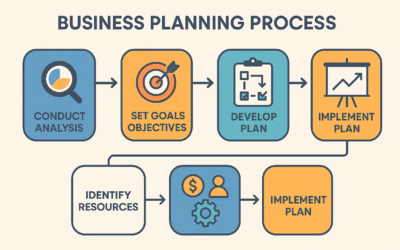Simply put, conflicts are not good for business. They can happen between employees, between managers, and among clients. No matter who it involves, it always cuts into efficient business operations and causes a hostile atmosphere to form around your company. Conflict resolution can be challenging, but the EAR method is one method for finding mutually beneficial solutions to these tense situations.
Every company and a team of professionals experienced conflict at one time or another, so it’s nothing to shy away from. Regardless of its roots in differences in personality, values, or perceptions, the EAR method can help you resolve conflicts by clearly expressing the several viewpoints, addressing points of contention, and working to resolve the conflict.
EAR can serve as a productive tool for maintaining working relationships both within and in connection to your business. Those looking for more applicable management solutions should also consider contacting Global Resources LLC today.
E – Express
Before all else, all parties in a conflict should be encouraged to fully listen to one another. This can foster better awareness and lead to more productive resolutions down the line. This listening should not be biased by prejudice whenever possible. When listening, be sure to take all forms of verbal and non-verbal communication into account.
Once all parties are properly listening, each party can begin to express their opinion or side in the conflict. These statements should be as detailed as possible and should always focus on “I” statements (such as “I want to change this policy…”). Along the same lines, all affected parties should express what they have done to meet their desired outcome.
A – Address
With the facts of the conflict laid out for all affected parties to see, a mediating party should begin to address primary and secondary points of contention. While this appraisal should focus on points core to the conflict, it should also address supplementary barriers to understanding (such as a raised tone of voice or exaggerate body language).
The mediator in a conflict should address the conflict from an impartial standpoint, using language such as “I got it” and “This is what I hear you saying…” in order to confirm a conflicting party’s viewpoint. The mediator should also ask the conflicting parties what a mutually beneficial outcome would look like, based upon their individual viewpoints.
R – Resolve
When the time is right, the mediator should return to the conflicting parties and discuss their preliminary resolution. If this resolution is accepted by all parties, then no further discussion is necessary. However, if further conflict exists (such as one party stating displeasure with the proposed resolution), the mediator should return to the “Address” stage and repeat the cycle as many times as is necessary.
Depending on your business’ hierarchy, additional consultation may be appropriate when working to resolve both internal and external conflicts. Middle-level managers, for example, may work with their own bosses to create a well-informed conflict resolution plan for their subordinates.
In any case, the resolution step is absolutely crucial when it comes to defusing harmful conflicts and returning your business operations to peak efficiency.

0 Comments